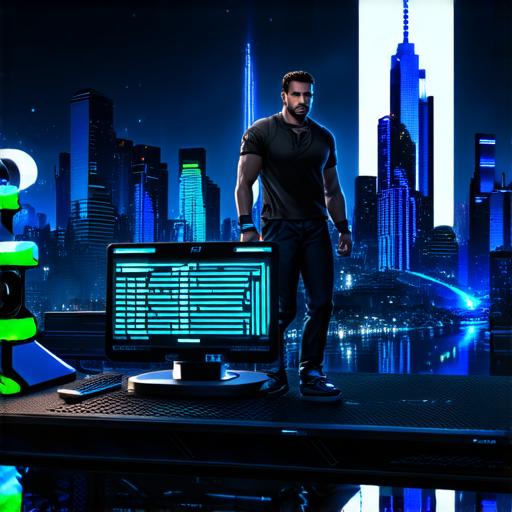<!DOCTYPE html>
What is Augmented Reality?
Augmented reality (AR) involves adding digital elements to the real world in real-time. AR technology enhances the user’s perception of the physical world by superimposing 3D models, animations, and other digital content onto the camera feed of a device. The goal of AR is to create an immersive experience that seamlessly blends the real world with the digital one.
AR has numerous applications in various fields such as gaming, education, marketing, and healthcare. For example, in gaming, AR allows players to interact with virtual objects in their physical environment. In education, AR can be used to teach anatomy by superimposing 3D models onto a student’s body. In marketing, AR can be used to create interactive product demos or to enhance the customer experience in retail stores.
What is Mixed Reality?
Mixed reality (MR) involves blending real-world and virtual environments in a seamless manner. MR technology allows users to interact with both the physical and digital worlds simultaneously, creating an immersive experience that transcends the boundaries of traditional reality. Unlike AR, MR requires specialized hardware such as headsets or wearable devices to create the illusion of a mixed environment.
MR has numerous applications in fields such as entertainment, education, and training. For example, in entertainment, MR can be used to create interactive movies or video games that blend real-world and virtual environments. In education, MR can be used to teach anatomy by allowing students to interact with 3D models in a mixed environment. In training, MR can be used to simulate real-world scenarios such as flight or driving, providing a safer and more cost-effective alternative to traditional training methods.
Key Differences between Augmented and Mixed Reality
While both AR and MR involve overlaying digital content onto the real world, there are significant differences between the two. Some of the key differences include:
-
Field of View: AR typically has a wider field of view than MR. This means that AR content is visible in multiple directions, while MR content is only visible within the confines of the headset or wearable device.
-
Interaction: AR allows for interaction with both the physical and digital worlds, while MR requires specialized hardware to create the illusion of a mixed environment. This means that MR users may have limited interaction with the physical world, while AR users can interact with both the physical and digital worlds.
-
Realism: MR typically provides a more realistic experience than AR. This is because MR allows for a more seamless blend of the physical and digital worlds, creating an environment that closely resembles traditional reality. In contrast, AR content may appear disconnected from the real world, making it less immersive.
-
Cost: MR typically requires specialized hardware such as headsets or wearable devices to create the illusion of a mixed environment. This means that MR experiences can be more expensive to implement than AR experiences. In contrast, AR experiences can be implemented using existing devices such as smartphones or tablets, making them more accessible and cost-effective.
Case Studies and Personal Experiences
One example of the differences between AR and MR is the use of virtual try-on technology in e-commerce. AR allows users to see how a product would look on them before making a purchase, while MR can provide a more realistic experience by allowing users to see how the product would look in their actual environment. For example, a user could try on a pair of glasses using an AR app and see how they would look on their face in real-time. In contrast, a user could use an MR system to virtually try on a pair of glasses and see how they would look on their face in their actual surroundings.
Another example is the use of MR in education. An MR system can be used to create an immersive learning environment where students can interact with 3D models of biological systems or historical artifacts. For example, a student could dissect a virtual human body using an MR system and see how the organs work together in real-time. In contrast, an AR app could be used to superimpose 3D models onto a textbook, making it less interactive and less immersive.

Conclusion
In conclusion, while both augmented and mixed reality involve overlaying digital content onto the real world, there are significant differences between the two. Mixed reality typically provides a more realistic experience, but requires specialized hardware and can be more expensive to implement. Augmented reality, on the other hand, is more accessible and cost-effective, but may provide a less immersive experience. As virtual and augmented reality technologies continue to evolve, it will be interesting to see how these differences play out in various applications.



